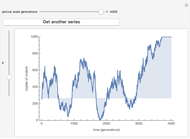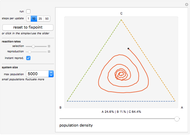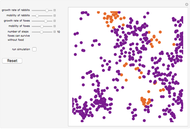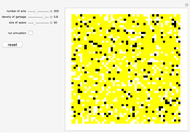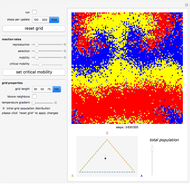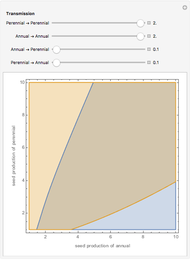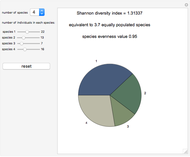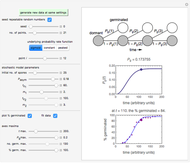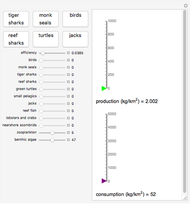Ecology of Reef Systems

Requires a Wolfram Notebook System
Interact on desktop, mobile and cloud with the free Wolfram Player or other Wolfram Language products.
This Demonstration describes the relationship between consumption and production in reef systems with variations in food availability and ecological efficiency. This is based on collected data from French Frigate Shoals in Hawaii. The buttons allow you to choose among several different biological species. The production and consumption are represented on vertical gauges.
Contributed by: Cameron Berglund (June 2015)
Special thanks to the University of Illinois NetMath Program and the Mathematics Department at William Fremd High School.
Open content licensed under CC BY-NC-SA
Snapshots
Details
Snapshot 1: production of green turtles
Snapshot 2: production of reef sharks
Snapshot 3: production of tiger sharks with maximum efficiency and varied consumption values
The equation used is  , where
, where  is production,
is production,  is efficiency, and
is efficiency, and  is consumption, with production and consumption expressed in
is consumption, with production and consumption expressed in  . Production is equal to the product of ecological efficiency—how efficient the organism is at using food—and consumption. The production of an organism measures how much of the food intake contributes to its growth.
. Production is equal to the product of ecological efficiency—how efficient the organism is at using food—and consumption. The production of an organism measures how much of the food intake contributes to its growth.
References
[1] R. W. Grigg, J. J. Polovina, and M. J. Atkinson, "Model of a Coral Reef Ecosystem," Coral Reefs, 3:1, 1984 pp. 23–27.
[2] NOAA Fisheries. "Hawaiian Monk Seals (Monachus schauinslandi)." (May 13, 2015) http://www.nmfs.noaa.gov/pr/species/mammals/seals/hawaiian-monk-seal.html.
Permanent Citation
"Ecology of Reef Systems"
http://demonstrations.wolfram.com/EcologyOfReefSystems/
Wolfram Demonstrations Project
Published: June 18 2015









